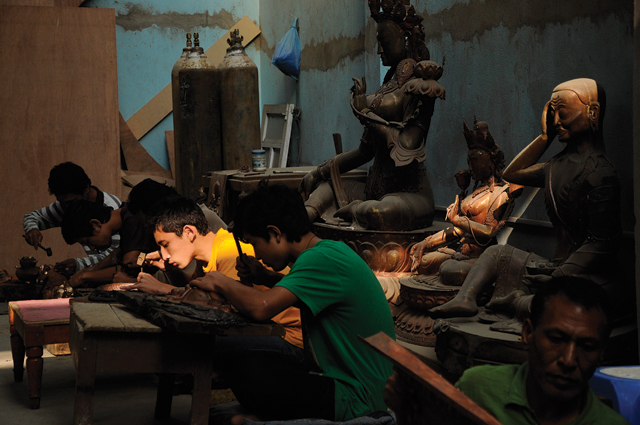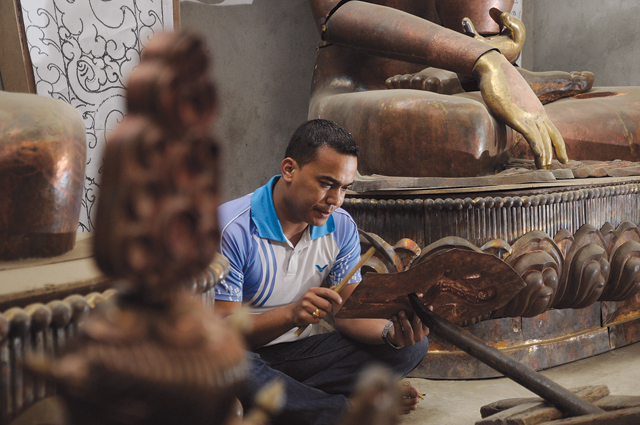The traditional ways of metal crafting in Kathmandu remain as robust as the images they create
The continuous rhythmic clanging of hammer against metal plays in the background. This sharp yet soothing music is what you hear coming from any metal workshop turning sheets of copper into fine works of art. I found Sajan Shakya’s workshop following this same song. A resident of Okubahal, Patan’s art hub, Shakya has a metal workshop 10 minutes away from his residence at Lukhushi. He started metal crafting at the tender age of ten when he used to get pocket money for melting the wax needed for shaping metal sheets for his grandfather. “I started to become genuinely interested as I helped my grandfather. I went to school in the morning and worked in the afternoon,” he recalls.

From creating images of gods varying vastly in size - from four to eighteen inches - to completing large scale renovation projects like the Swoyamabhu chaitya and Bodhgaya temple, Sajan Shakya has never lost his love for metal craft. Today, he has about fifteen people working under him, most of whom were taught by Shakya himself. “There weren’t many metal crafters when I started. Those that existed were limited to the Shakya families who passed the knowledge on to their children. The Tamarakars only used to make pots and gaagri out of brass. They didn’t make idols of deities or items of religious importance like we did then,” he says. “Today however the standards of the artisans have risen and anyone who wants to learn the craft has the opportunity.” The crafters are not limited to the Newar community anymore. The artisans today vary from creating images of gods to souvenirs and utilitary items. While most metal crafters prefer copper, brass and zinc are also traditional choices. Shakya believes that there are over 10,000 metal crafters working in Kathmandu valley alone.
We know of Princess Bhrikuti taking Buddhist idols to Tibet when she was married to Tibetan king Tsrong Tsang Gampo. It revolutionized the trade of Nepali artwork to Tibet where they were marveled for their detailed beauty. In a way, the Nepali art market has relied on export as an equally important source of income. With the gradual flow of time, this market has reached out to Western countries as well. At the same time, I’ve also heard of other Asian countries starting to create machine molded idols in large scales in factories. I asked Shakya if it worries him that the value of his art will gradually decrease. “Those with skills in their hands do not have to worry,” he replies. “The clients we have are the ones who don’t like the factory made products. They want it to be specifically hand-made. That is why they come to us in the first place,” he adds.

There is always something graceful about an artwork created entirely from scratch, whether it is on paper or made of copper. The eighteen foot statue of Shakyamuni Buddha loomed patiently watching us in the fluorescent light of the workshop as the day came to an end. As I looked around at the many idols of deities Shakya and his team were working on, I was certain that this art wasn’t going to be lost anytime soon.









